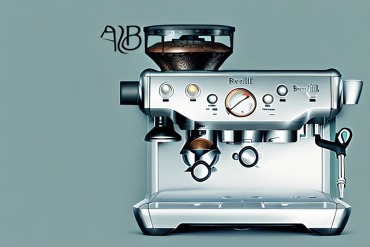If you’ve noticed a problem with your Breville espresso machine’s pressure gauge, you may feel stuck when it comes to fixing the issue. Fortunately, there are several steps that you can take to troubleshoot and potentially solve the problem.
Identifying Pressure Gauge Problems
The first step in troubleshooting your pressure gauge is to clearly identify the issue. Most often, pressure gauge problems are caused by a misreading, a leak or blockage, worn or damaged parts, improper adjustments, or a faulty calibration. Checking the gauge reading is a good place to start. The reading should match the pressure rating of your Breville espresso machine. If your gauge is not accurate, it may need to be calibrated.
If the gauge is not calibrated correctly, it can lead to inaccurate readings and potential damage to the machine. To ensure accuracy, it is important to use a certified technician to calibrate the gauge. Additionally, it is important to check for any signs of wear or damage to the gauge, as this can also lead to inaccurate readings. If any parts are worn or damaged, they should be replaced to ensure the gauge is functioning properly.
Checking for Leaks and Blockages
Inspecting the machine for leaks and blockages is another important step in troubleshooting your pressure gauge. The most likely spots for a leak are where the seals connect the upper and lower bodies of the boiler. Inspect the gaskets carefully and replace them if needed. You should also check any valves that could be causing a blockage, including the steam lines and the pressure release valve.
It is also important to check the pressure gauge itself for any signs of damage or wear. If the gauge is cracked or has any other visible signs of damage, it should be replaced immediately. Additionally, if the gauge is not registering the correct pressure, it may need to be recalibrated or replaced.
Disassembling the Machine for Inspection
If you’re still unable to identify the cause of the pressure gauge issue, you may need to disassemble the machine for further inspection. Make sure to take note of where each part goes before beginning the process to make reassembly easier. Once you’ve removed the external components, inspect internally for any signs of wear or damage. Pay close attention to the seals and the pressure release valve. These are the most common causes of pressure gauge issues.
When inspecting the internal components, be sure to use a flashlight to check for any cracks or other signs of damage. Additionally, check the wiring for any loose connections or frayed wires. If any of these issues are present, they should be addressed before reassembling the machine. Once all of the components have been inspected and any necessary repairs have been made, you can begin the process of reassembling the machine.
Replacing Worn or Damaged Parts
If you identify any parts as being worn or damaged, they will need to be replaced. It’s important to replace any worn or damaged components with parts that are intended specifically for your Breville espresso machine. Unsuitable parts can cause further damage or malfunction. If you’re uncertain about which parts you need, consult your owner’s manual or contact Breville for assistance.
When replacing parts, it is important to take the time to properly clean the area around the part before installing the new one. This will help ensure that the new part is properly secured and that no debris or dirt is left behind. Additionally, make sure to follow the instructions in the owner’s manual for any additional steps that may be necessary for the installation of the new part.
Adjusting the Pressure Release Valve
If everything else has checked out and you still haven’t solved the problem with your pressure gauge, you should adjust the pressure release valve. It’s important to avoid making any dramatic adjustments as this could make the gauge inaccurate. Instead, take small advancements until you reach your desired output pressure.
When adjusting the pressure release valve, it is important to use a wrench or other appropriate tool to ensure that the valve is tightened securely. Additionally, you should always wear protective gear such as gloves and safety glasses when working with the pressure release valve. This will help to protect you from any potential hazards.
Calibrating the Pressure Gauge
A misreading pressure gauge typically requires calibration. To do this, you’ll need to attach a booster gauge to the machine. Then use this gauge to calibrate the pressure gauge as described in your owner’s manual. Once complete, check for accuracy and make sure it matches the pressure rating of your machine.
Troubleshooting Tips and Suggestions
When troubleshooting your Breville espresso machine’s pressure gauge, here are a few tips to keep in mind:
- Check for leaks or blockages and replace any worn/damaged parts.
- Familiarize yourself with the schema before disassembling the machine.
- Make minor adjustments when calibrating to ensure accuracy.
- Consult the owner’s manual or contact Breille for assistance.
By following these troubleshooting steps, you can hopefully resolve any issues with your espresso machine pressure gauge.


0 responses to “Troubleshooting a Breville Espresso Machine Pressure Gauge Not Working”